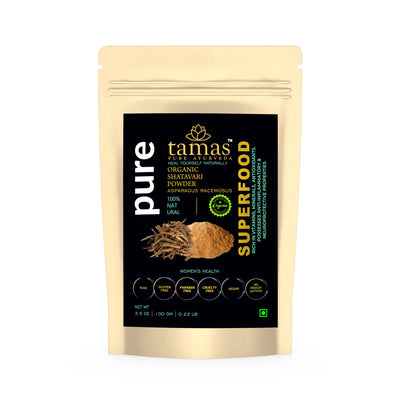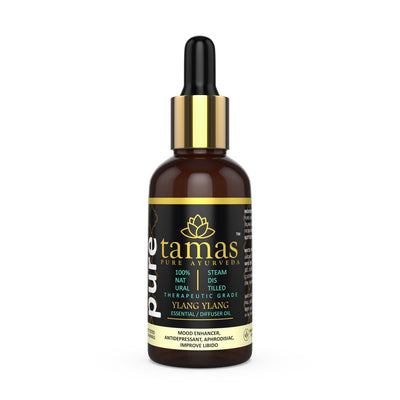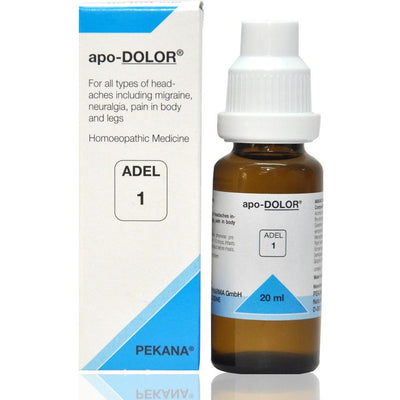
Reference Text: (Ashtangahridayam)
PRESENTATION: 10 ML
Seasonal changes are widely celebrated by poets, especially the arrival of spring and autumn. Unfortunately, they can become quite literally breathtaking for some people who are susceptible to allergies and sinus infections during seasonal changes. Allergic rhinitis, cough, nasal blockage are common problems experienced by many people. This is where Kerala Ayurveda has been the leader in bringing people safe herbal solutions. The Anu Thailam - Ayurvedic Nasal Drops is viewed as the perfect help for any issues pertaining to the nasal tract.
Ayurveda is a holistic wellness system that recommends lifestyle changes, dietary changes, and other natural ways to treat a disease or disorder. Unique herbal formulations as documented in ancient texts are used to treat diseases. This holistic approach is natural, safe, and can be very helpful. Those who suffer from sinusitis, allergic rhinitis, and other related problems would find the Anu Thailam very helpful.
In Ayurveda, the nasal passage and its functions are called Nasya, ‘relating to the nose’ in Sanskrit. The Nasya is viewed as a key component even in the general body purification of PanchaKarma. Ayurvedic Nasal Drops act on the Nasya and help in a variety of Vata and Kapha issues, while also aiding the prana and brain. Additionally, the herbs in Ayurvedic Nasal Drops like the Anu Thailam are also known to relieve decongestion to a large extent.
Anu Thailam is a classical Ayurvedic Nasal Drop formulation that is used for a multitude of purposes that effectively help reduce any issues in the nasal tract. It is used in traditional Ayurvedic treatments for health issues above the neck and especially those affecting the sensory organs. Anu Oil is used as a complementary treatment to other medications to treat allergic rhinitis and cough.
Anu Oil or Anu Thailam is a product from Kerala Ayurveda that helps heal respiratory problems due to allergies. Anu oil is dispensed as Ayurvedic nasal drops that act as a complementary treatment for respiratory allergies. It is a nasya oil that is meant for nasal application. The nozzle of the bottle needs to be inserted near the nose and then squeezed to release the oil. It should be used as per the directions of the physician.
This nasya treatment for sinusitis can be very helpful in providing relief from the painful symptoms of a sinus infection. It can help to clear the nasal blockage and help in providing relief from pain. It is an Ayurvedic Nasal Drops for sinusitis that is prepared as the Ayurvedic text Ashtangahrudyam. Anu Thailam nasal drops are made from herbs, sourced from nature, and rigorously tested in our Research and Development Labs for purity and potency.
Anu Thailam Benefits
Anu Thailam is an Ayurvedic Nasal Drops that are used to help cleanse the nasal passages and aid in the treatment of upper respiratory problems. Ayurveda states that Anu Thailam has ingredients that are known to have a strengthening effect on the eyes, ears, nose, tongue, and throat. It is prescribed as an Ayurvedic aid for those who have neurological issues in the region of the face, headaches, and premature greying of the hair. This Ayurvedic Nasal Drops (Anu Thailam) can also be used as a part of a daily regimen for good health.
Its ingredients are known to help with the following
- It can help in solving problems related to the head, nose, throat that occur due to allergies.
- It can provide relief from respiratory problems.
- This Ayurvedic Nasal Drops is a great relief for individuals with sinus issues. It is a fantastic supplement to alleviate any existing or fresh symptoms of sinusitis.
- One of the main Anu Thailam uses is lubricating the nose that helps in clearing blocked nose.
Ayurveda is an ancient science that promotes holistic well-being to lead a healthy and disease-free life. Hence, in addition to taking Ayurvedic medicines, following a daily regimen of healthy practices is necessary as well. Also called Dinacharya in Ayurveda, it helps to sync our bodies according to the master cycle of nature and regulate other rhythms.
Dinacharya focuses on both the physical and mental aspects of well-being that should be followed every day. As a part of your Ayurvedic Dinacharya, two drops of Anu thailam can be administered through each nostril followed by deep breathing. This helps to keep the airway clear and strengthens general immunity. Nasal drops of Anu thailam can be used after a light facial massage for nasal and upper body cleansing. This is an effective method that helps to eliminate excess Kapha from the head, nose and throat.
In addition, phenomenal effects can be seen on the face, hair, shoulders and chest from using Anu thailam.
Anu Thailam Nasal Drops Ingredients
Anu thailam requires many ingredients. The prominent ingredients among them include:
Jivanti (Leptadenia reticulata)
- Ayurveda states that it improves vision and is nourishing for the body improving strength, life expectancy, and immunity
- It balances all the three Doshas and the Vata and Pitta Doshas in particular
- Its properties include Chakshushya (improving vision and treating eye disorders), Bruhmana (nourishing), and Balya (improving immunity)
Hrivera (Coleus zeylanicus)
- Reduces vitiated Kapha and Vata Doshas
- It is used in Ayurveda as an antimicrobial, anti-bacterial, anti-fungal, cytotoxic, and antioxidant
- It is helpful in treating nasal bleeding disorders
- It is used to prepare formulations to treat headaches and sinusitis
- Devadaru is known as Himalayan Cedar.
- It can balance vitiated Kapha and Vata dosha
- It is helpful in treating coughs and cold.
- It is helpful in treating sinusitis and other nasal disorders.
- It has analgesic properties and can treat headaches.
Jalaada (Cyperus rotundus)
- It is used in traditional medicine for its anti-inflammatory properties.
- It pacifies Kapha and Pitta Doshas
Tvak (Cinnamomum zeylanicum)
- It is used in traditional medicine as a carminative, astringent, haemostatic, antiseptic, antispasmodic, and expectorant
Usira (Vettiveria zizaniodes)
- It pacifies Vata and Pitta Doshas
- It is used as a detoxifier and aids wound healing
Gopi (Hemidesmus indicus)
- Balances the three Doshas particularly Kapha and Vata Doshas
- It is an Ayurvedic coolant
Himam (Santalum album)
- Sandalwood
- Traditionally used in the treatment of skin disorders
- It is helpful in treating headaches and migraine
- Used traditionally as an antifungal, antibacterial, antioxidant, antiviral and anti-inflammatory
- This is one among the group of 10 herbs called the Jeevaneeya Gana (10 herbs) which have anti-aging properties.
- It is a multipurpose ingredient helpful Ayurvedic medicine as an anti-inflammatory, antioxidant, anti-cancer, anti-bacterial, anti-arthritic, analgesic, and antacid
Kolmaji (Cyperus malaccensis)
- Is used in Ayurveda to cure sores
Agaru (Aquilaria Agallocha)
- Is used in traditional medicine as an astringent, carminative and antiasthmatic
- Is used in Ayurveda to help treat skin diseases
- It is called the queen of herbs
- It is useful in Ayurveda as a nutritive tonic, rejuvenative, antioxidant, anti-microbial, anti-depressant, adaptogenic, and immunomodulator
Prapundarika (Sachaarum Officinarum)
- A cooling Ayurvedic antiseptic that is said to give strength and comfort to the mind and heart
Bilva (Aegle marmelos)
- It balances all the three Doshas
- It is used in the treatment of sinusitis and the common cold
Utpala (Kaempferia rotunda)
- It is used in Ayurvedic medicine as an antitumour, antitoxic and anti-inflammatory
Brahati (Solanum indicum)
- One of the potent Dasha Moola herbs
- Is an Ayurvedic anti-inflammatory
Kantakari (Solanum suratense)
- It is used in traditional medicine as an antioxidant and anti-inflammatory
Rasna (Alpinia officinarum)
- Ayurveda uses this herb for its properties of being an immunomodulator, anti-oxidant, and antimicrobial.
Salaparni (Desmodium gangeticum)
- This herb is used in Ayurveda as an anthelmintic, immunity-stimulating, anti-catarrhal, antioxidant, and nervine tonic
- It balances Vata and Kapha Doshas
Prasniparni (Uraria picta)
- It is used in traditional medicine as an anti-inflammatory and anti-infective
Krimihara (Embelia ribes)
- Wound healing properties in Ayurveda
- Balances Vata Dosha and enhances the movement in the body
Kushta (Saussurea lappa)
- It pacifies Vata and Kapha diseases
- It is useful in traditional medicine as an antiviral, anti-inflammatory and analgesic
Patra (Cinnamomum tamala)
- Useful in Ayurvedic treatment of inflammation and running nose
- Reduces the vitiated Kapha and Vata Doshas
Truti (Elettaria cardamomum)
- It balances Kapha and Vata Doshas
- It is used in Ayurveda as an antioxidant
Renuka (Vitex negundo)
- Balances Vata and Kapha Dosha
- Helps in Ayurvedic medicine to heal wounds
Kamala (Nelumbo Nucifera)
- It is useful as an Ayurvedic diuretic, coolant, antipyretic and tonic
Aja Ksheera (Goat Milk)
- High protein to nourish without the cooling effect of cow’s milk.
Jalam (Rainwater)
- In ancient times rainwater was unpolluted and pure. Today this would be clean water.
Tila Thaila (Sesamum indicum)
- Pacifies Kapha and Vata Doshas
- Is used in Ayurveda to treat neuromuscular disorders. It is strengthening and gets well absorbed by the tissues
Anu Thailam Dosage
The Anu Thailam Ayurvedic Nasal Drops dosage is 1- 2 drops in each nostril or as directed by the Physician.
Allergies Overview
Many people commonly experience allergies causing respiratory problems. Some people experience these problems during the cold weather while others face this problem in spring due to pollen. There could be various reasons for an allergy that has common symptoms such as runny nose, nasal discharge, cough, wheezing, and sinusitis. Allergies need to be tackled at the root. The cause must be tackled to prevent this problem from repeating.
Allergic Respiratory Causes
Allergic respiratory conditions, including sinusitis, happens mainly because of allergy to a particular substance, known as an allergen. For some people, pollen is the allergen and their conditions worsen during spring season when plants release pollen in the air. The immune system of the body perceives the pollen grain as a danger and triggers off an allergic reaction. This includes coughing, running nose, wheezing, blocked sinuses, etc.
Allergies can be caused by smoke, dust, and pollution. Any of these factors may trigger an allergic reaction.
Some of the common causes of allergy include:
- Dust
- Smoke, including pollution
- Cold air
- Consumption of cold water, cold drinks, and cold foods
- Fatty food
- Allergens like pollen
- Weakness of the immune system due to genetic predisposition
Ayurveda’s view of Respiratory Allergy
In Ayurveda, all diseases and health problems are believed to occur as a result of an imbalance in the Vata, Pitta, and Kapha doshas. This imbalance in Vata, Pitta, and Kapha can occur due to reasons like undesirable changes in food and drink, changes in weather, and a change in lifestyle. This can disturb the normal functioning of the Agni or digestion in the body. This leads to the production of Ama or toxins in the body.
The ama can cause a severe imbalance in the doshas causing allergic reactions and other problems like sinusitis. The main reason is that the dosha imbalance because of ama weakens the immune system. When the immune system weakens, the body reacts strongly against any potential threat like an allergen. This leads to reactions like running nose, sneezing, coughing, sinusitis, wheezing, etc.
Since any of the doshas may be affected, allergies can be classified based on the dosha that is affected.
Kapha allergies are the major cause of respiratory problems. This increases more during spring due to increased pollen content in the air. It causes irritation of the nose and mouth, leading to sneezing, running nose, and hay fever. It also leads to infection in the sinuses causing pain and congestion. Cough, accumulation of mucus leading to chest congestion, wheezing, and asthma can occur due to allergies caused by kapha imbalance.
Apart from allergens in the air, certain foods like milk products can increase kapha-based allergies. Change of seasons disturbs the digestive agni. Not managing diet properly can lead to ama accumulating, which weakens the immune system leading to allergies.
Ayurvedic treatment of Respiratory Allergy
Ayurveda uses a holistic approach to treat respiratory allergies. Formulations made using Ayurvedic herbs are prescribed to treat these conditions. Other recommendations Ayurveda has to treat respiratory allergies include:
- The buildup of toxins or Ama is one of the causes of respiratory problems. Detoxification is recommended to remove Ama. Panchakarma is an Ayurvedic treatment that helps detoxify the body. Panchakarma cleanses the body and when done before the start of the season changes can help prevent respiratory allergies. As mentioned earlier too, cleansing of the nasal tract is one of the most important aspects in the Panchakarma, and the Anu Thailam Ayurvedic Nasal Drops is one of the most effective remedies for this.
- It is important to drink warm liquids only. Ayurveda recommends drinking a glass of warm water first thing in the morning and before going to bed. Cold drinks must be strictly avoided.To boost immunity, physical activity plays an important part. Exercise and Yoga can help strengthen the body.
- To boost immunity, physical activity plays an important part. Exercise and Yoga can help strengthen the body. Taking a warm bath is recommended as it opens the pores of the body. Abhyanga or self-massage is recommended to remove toxins and reduce dosha imbalance.
- Pranayama involves carrying out a set of breathing exercises. These breathing exercises are strongly recommended for people with respiratory allergies. Pranayama strengthens the respiratory system and the lungs. It is a powerful way of improving immunity and preventing respiratory problems.
- Taking a warm bath is recommended as it opens the pores of the body. Abhyanga or self-massage is recommended to remove toxins and reduce dosha imbalance.
-
The diet to be followed depends on the season. Some of the dietary recommendations are:
- Using honey mixed with juice or taken directly.
- Using garlic with food or eaten raw is helpful.
- Eating Amla (gooseberry) is recommended so the body gets Vitamin C.
- Ginger, cumin, garlic, and curry leaves can be added as spices while cooking.




















